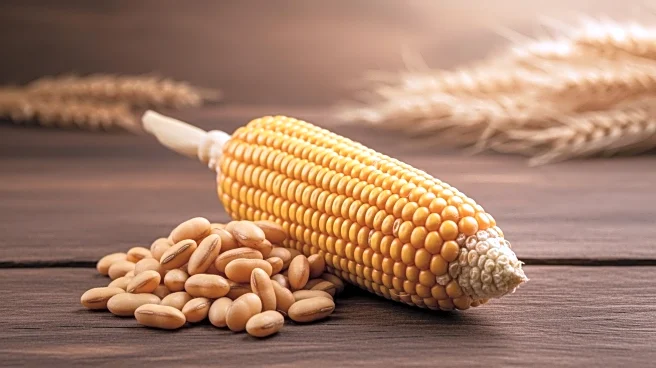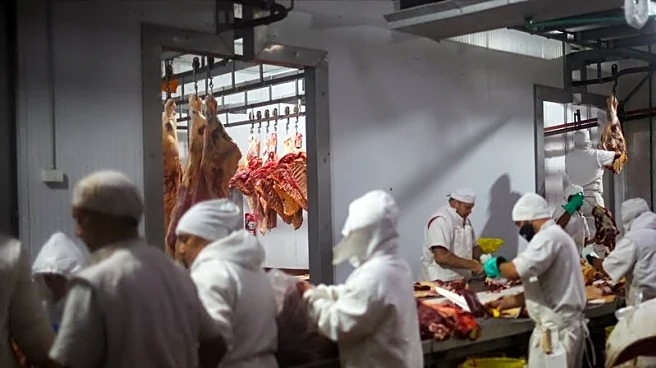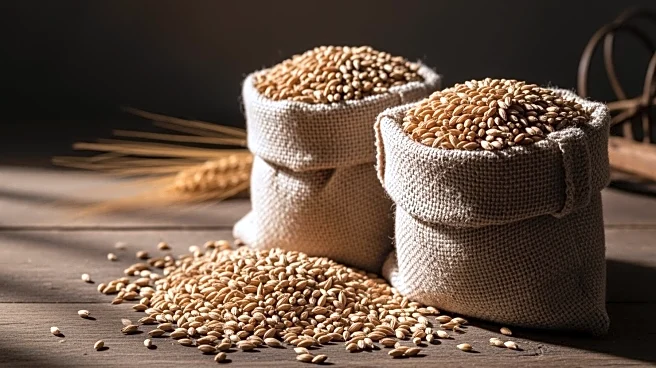What's Happening?
Soybeans and other grains demonstrated strength in the market, with January soybeans rising by 12 cents to $10.62 per bushel. Corn and wheat also saw gains, with December corn up by 5 cents and December CBOT wheat increasing by 9.25 cents. The market's
upward movement occurred despite a lack of active buying, as sellers remained absent. The agricultural sector is experiencing fluctuations due to various factors, including crop stress and production adjustments. Meanwhile, cattle values faced pressure following the U.S. decision to increase its import quota on Argentine beef, impacting domestic cattle prices.
Why It's Important?
The performance of soybeans and grains is crucial for the agricultural sector, influencing farmers, traders, and related industries. Rising prices can benefit producers by increasing revenue, but they also pose challenges for buyers and consumers facing higher costs. The U.S. decision to raise beef import quotas highlights the complexities of international trade and its impact on domestic markets. The agricultural sector's dynamics are influenced by global trade policies, weather conditions, and supply chain factors, all of which play a role in shaping market trends and economic outcomes.
What's Next?
Market participants will continue to monitor crop yields and production forecasts, as these factors will influence future price movements. The U.S. Department of Agriculture's reports and policy decisions will be critical in providing guidance on market expectations. Additionally, international trade developments, such as tariff changes and import quotas, will impact the agricultural sector's outlook. Stakeholders will need to navigate these complexities to make informed decisions in a volatile market environment.













